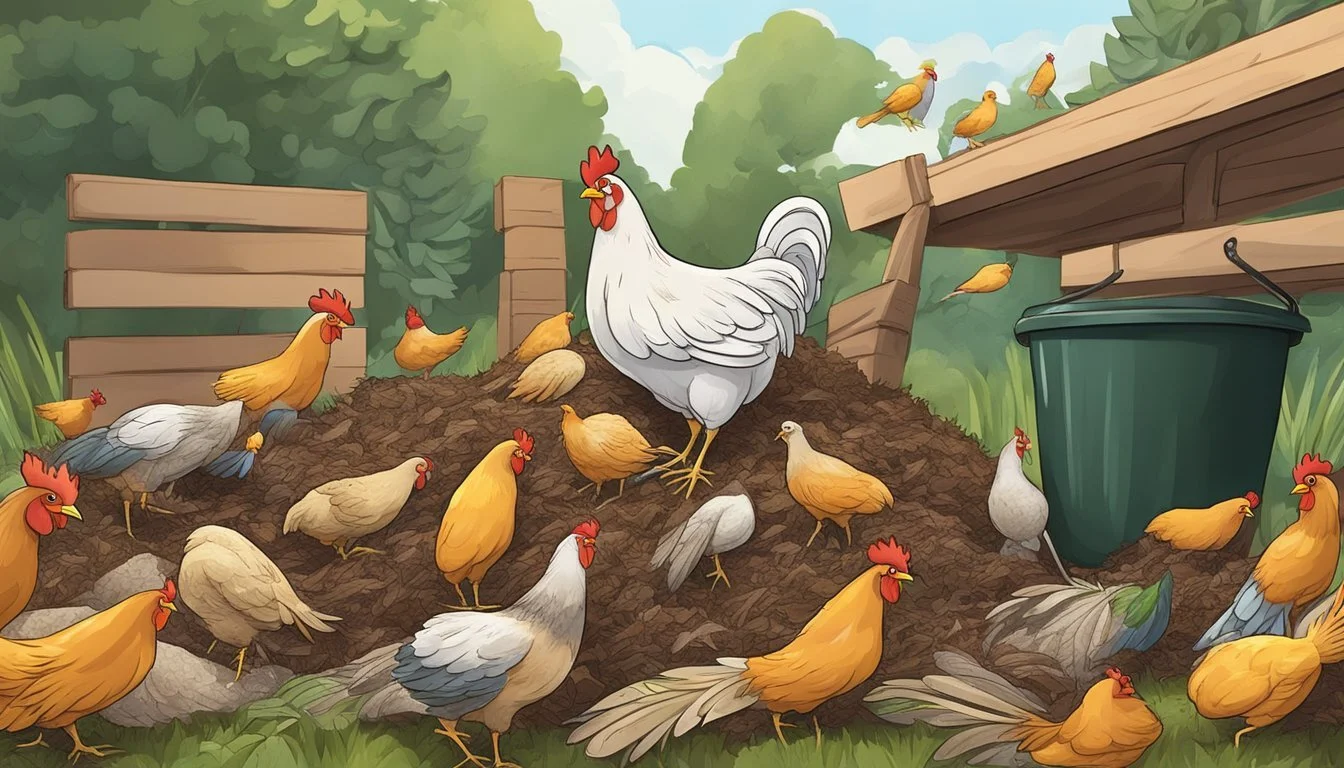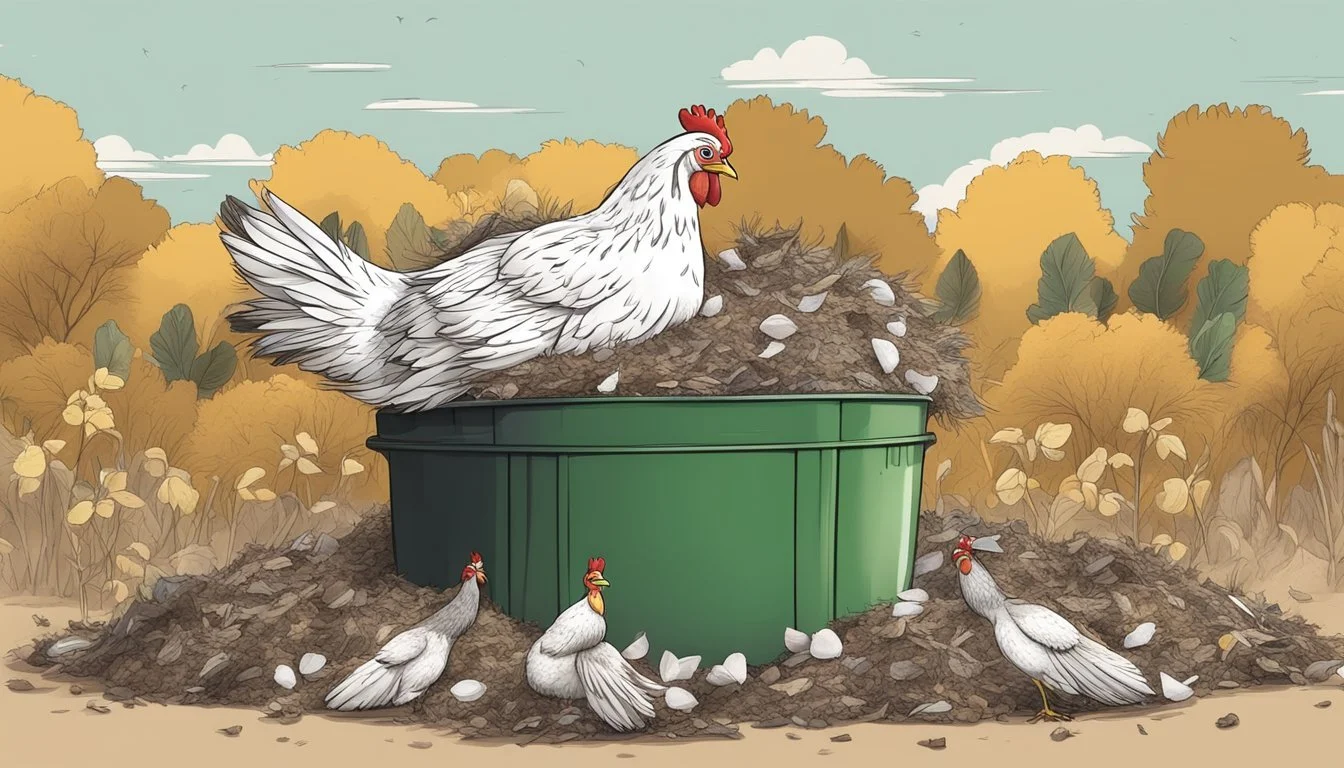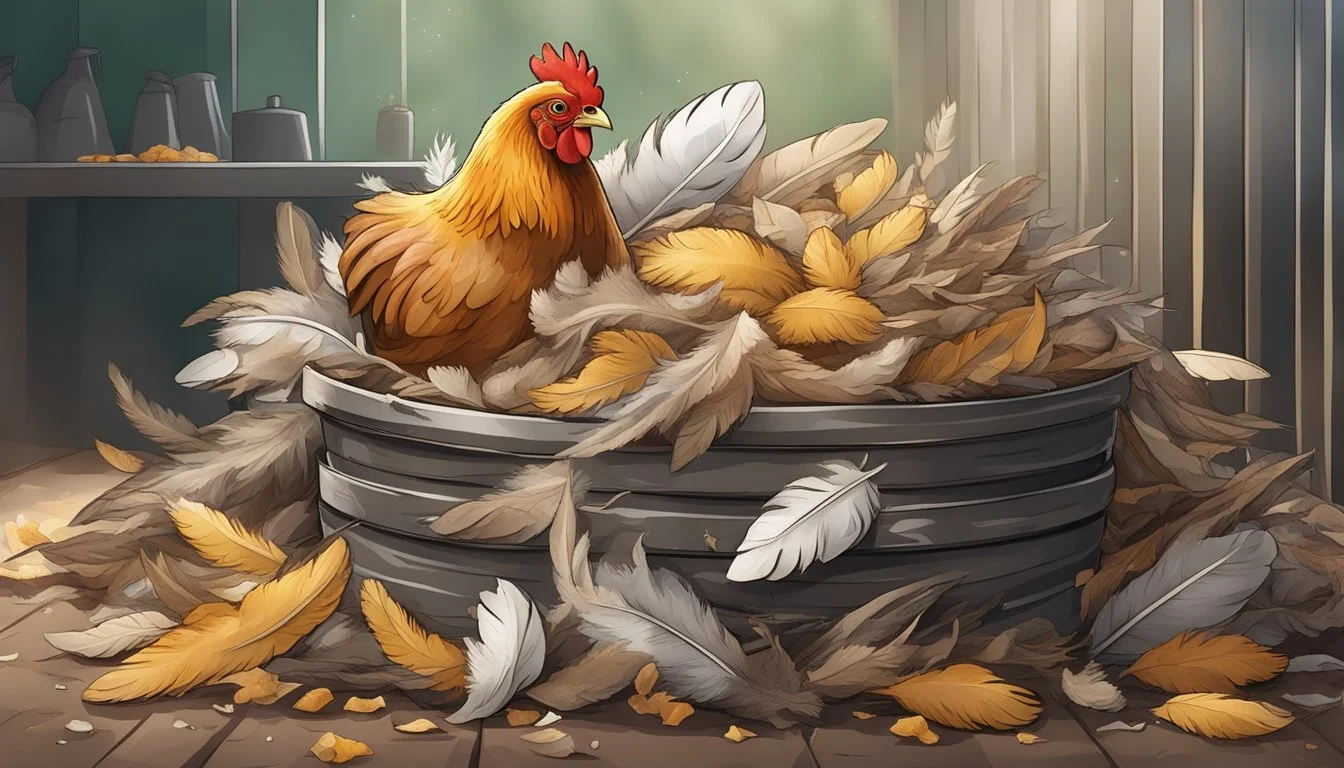Can You Compost Chicken Feathers?
Understanding the Basics of Poultry Waste Composting
Chicken feathers, often an overlooked byproduct of poultry farming, present a valuable resource for enriching compost. Rich in nitrogen, feathers can be effectively broken down by compost microorganisms, transforming what might seem like waste into a beneficial amendment for soil. While the decomposition rate of feathers is slower than that of softer organic materials due to their keratin content, proper compost management can accelerate the process, integrating feathers as a regular component in the compost pile.
Incorporating chicken feathers into compost requires layering them with a balanced mix of green and brown materials to optimize the carbon-to-nitrogen ratio essential for efficient decomposition. Moisture, aeration, and a consistent turning schedule further facilitate the breakdown of feathers, assuring that the resulting compost is nutrient-rich and ready for enhancing garden soil. Knowledgeable composters value chicken feathers as a sustainable contribution, diverting them from the waste stream and promoting a closed-loop system that honors the principles of organic waste recycling.
Composting Basics
In the context of waste management and soil health, composting plays a critical role. It is a process governed by basic principles, contributing to the nutrient cycle through the decomposition of organic matter.
Understanding Composting
Composting is a natural process of decomposing organic matter such as leaves, vegetable scraps, and animal products into a nutrient-rich soil amendment known as compost. The decomposition process is facilitated by microorganisms like bacteria and fungi, which break down organic material into simpler compounds. For successful composting, a balance of carbon-rich materials, known as "browns," and nitrogen-rich materials, the "greens," is essential. Oxygen is another key component, supplied by regularly turning the compost pile to ensure aerobic conditions.
Browns (Carbon): Dry leaves, branches, sawdust.
Greens (Nitrogen): Kitchen scraps, grass clippings, chicken feathers.
Benefits of Composting
Composting offers multiple benefits for the garden and the environment. It enriches the soil by adding essential nutrients, thus promoting healthier plant growth. This natural fertilizer improves soil structure, which increases the soil's ability to retain water and supports the soil's ecosystem by providing food for beneficial microorganisms.
Soil Enrichment: Compost adds vital nutrients back into the soil.
Water Retention: Enhanced soil structure results in better water conservation.
Microbial Activity: Compost supports diverse life in the soil.
Materials Suitable for Composting
In composting, distinguishing between the type of organic waste and its nutrient profile is crucial for a balanced compost pile. Certain ingredients, such as kitchen scraps and poultry feathers, offer significant benefits to the composting process.
Organic Waste Types
Organic waste can be categorized essentially into two groups: green and brown materials. Green materials are typically wet and provide nitrogen, while brown materials are dry and are a source of carbon.
Green materials include:
Kitchen scraps (vegetable and fruit peels, coffee grounds)
Fresh plant material (grass clippings, green leaves)
Poultry feathers
Manure (from herbivores like cows, horses, rabbits)
Brown materials consist of:
Dry leaves
Straw
Paper products (non-colored, non-glossy)
Wood chips
It's important to maintain a good balance between these two types of materials in your compost pile to encourage proper breakdown and avoid issues like foul odors or pests.
Nitrogen-Rich Ingredients
Nitrogen is a critical element in composting, acting as a protein source for the microorganisms that break down organic matter. Nitrogen-rich ingredients include:
Poultry feathers: Considered a fantastic nitrogen source and beneficial for composting when sourced responsibly.
Kitchen scraps: Provide a steady flow of nitrogen when added regularly to the compost pile.
Manure: An excellent source of nitrogen and other nutrients, but one should use only herbivore manure to avoid harmful pathogens present in carnivore manure.
By including these ingredients, composters can ensure their compost pile is healthy and effective, resulting in a nutrient-dense final product that can enrich soil and support plant growth.
Composting Chicken Feathers
Composting chicken feathers can be beneficial as they are a source of nitrogen. However, proper preparation is needed due to the keratin they contain, which can slow down decomposition.
Feather Properties
Chicken feathers are largely composed of keratin, a resilient and tough protein that offers structural support to feathers. Keratin makes feathers resistant to quick decomposition, yet it's this durability that makes feathers a rich source of nitrogen for compost. They contain approximately 15% nitrogen, which is essential for plant growth.
Preparation for Composting
To effectively compost chicken feathers, gardeners should:
Chop or shred the feathers to increase the surface area and speed up decomposition.
Mix feathers with a balanced ratio of carbon-rich materials, such as leaves or straw, to create an ideal environment for composting organisms to work.
Maintain moisture and aeration in the compost pile to help microbial activity.
Decomposition Challenges
Due to the keratin content, chicken feathers decompose slower than other organic waste. This is because keratin is more difficult for microbes to break down. To mitigate this:
Regularly turn the compost pile to introduce oxygen and speed up the composting process.
Add nitrogen-rich materials like manure or coffee grounds to act as accelerators.
Ensure that the pile temperature remains high, as heat assists in breaking down hard-to-decompose materials.
Composting Methods
The composting of chicken feathers can be accomplished through various methods, each with its own specific processes and requirements. Feathers can provide a rich source of nitrogen to a compost system, an essential nutrient that aids in the breakdown of organic matter.
Traditional Composting
In traditional composting, chicken feathers are mixed with carbon-rich materials, often referred to as "browns," such as dry leaves, straw, or wood chips. This method relies on the natural breakdown of materials through aerobic decomposition, requiring oxygen and moisture. The pile should be turned periodically to introduce oxygen, accelerate the process, and prevent odors. The ratio of carbon to nitrogen (C) is crucial, with an optimal range of 25:1 to 30:1 ensuring effective decomposition.
Vermicomposting
Vermicomposting, or worm composting, uses specific types of worms, usually red wigglers, to break down organic waste. Feathers can be added to a vermicomposting system, but they must be introduced in moderation, as they decompose more slowly than other "greens" like fruit and vegetable scraps. The worms consume the materials, resulting in castings, a nutrient-rich byproduct of the composting process. The environment must be carefully managed to maintain proper temperature and humidity levels for the worms' well-being.
Aerobic vs. Anaerobic
Aerobic and anaerobic processes differ fundamentally in their approach. Aerobic composting occurs in the presence of oxygen, promoting faster decomposition and preventing foul smells. It is the preferred method when composting chicken feathers due to its efficiency in breaking down proteins in the feathers. On the other hand, anaerobic composting does not require oxygen but is a slower process that can produce a pungent odor, making it less desirable for feathers. For those composting at home, aerobic practices tend to be easier to manage and provide faster results.
Compost Utilization
Composting chicken feathers serves as a significant boost to soil health, enhancing its structure and providing essential nutrients for plant growth.
Soil Enrichment
Chicken feathers are a valuable addition to any composting system, as they act as a soil amendment. When broken down, feathers help to improve soil structure, increasing its porosity and water retention capabilities. They contribute to the creation of humus, a nutrient-rich material that supports soil fertility and health. By incorporating feather compost into the ground, one enriches the soil, which in turn promotes the growth of healthy plants.
Nutrient Source for Plants
As a nutrient source, feather compost is rich in nitrogen, a critical component that plants require for vital functions like growth and photosynthesis. Nitrogen in the feathers is released slowly as they decompose, providing a steady, long-term supply of this essential nutrient. This delayed release makes feathers an effective natural fertilizer, reducing the need for synthetic alternatives and ensuring that plants receive a constant stream of necessary nutrients to thrive.
Environmental Impact
Composting chicken feathers plays a tangible role in enhancing sustainable agriculture and managing environmental concerns effectively.
Reducing Waste in Landfills
Chicken feathers, largely composed of keratin, have traditionally contributed to the volumes of waste in landfills. By composting feathers, one can divert this abundant byproduct from landfills, thereby reducing waste accumulation. This practice supports sustainable agriculture by repurposing what would otherwise be an underused resource.
Mitigating Methane Emissions
Feathers in landfills degrade anaerobically, producing methane, a potent greenhouse gas contributing to climate change. Composting them aerobically minimizes methane emissions and thereby lessens their environmental impact. Moreover, the process results in the production of nitrogen-rich compost that can benefit soil health in agricultural settings.
Special Considerations
When composting chicken feathers, one must take special care to ensure that the process is effective and sanitary. Specifics such as the compostability of other animal by-products and the control of diseases are crucial.
Composting Animal Products
Animal products vary in their compostability. Chicken feathers are rich in nitrogen and can be composted to enhance soil quality. However, they should be mixed with plenty of carbon-rich materials to balance the compost pile. Meat and blood are generally advised against in composting due to their potential to attract pests and emit unpleasant odors as they decompose. In contrast, chicken bones can also be composted, but require more attention as bones break down much slower than other organic matter and may carry disease if not handled properly.
Disease Control
When composting feathers or any animal product, controlling the spread of disease is paramount. Pathogens could be present, especially in chicken feathers, blood, or meat. To mitigate this risk:
Ensure that the compost reaches a sufficient temperature to kill pathogens.
Avoid using feathers from birds that were ill.
If composting chicken bones, it is advisable to cook them first to kill any potential pathogens.
By following these considerations, one can safely compost chicken feathers and other animal products, thus returning valuable nutrients to the soil without risking human or plant health.
Related Uses of Feather Waste
Feathers discarded from poultry industries carry potential beyond composting. They can be recycled into useful products due to their high keratin content, creating a sustainable waste management practice.
Feather Waste Management
In the realm of feather waste management, feather meal is a prevalent product. It's created by subjecting feathers to high-pressure steam processing, akin to autoclaving, and then drying the material. This process yields a powdery substance rich in nitrogen. It is primarily utilized as feed in aquaculture and livestock due to its high protein content.
Alternative Applications
Aside from compost and feed, feather waste has innovative uses. Recent advancements have shown that it's possible to convert feathers into biodegradable plastics. These plastics could provide an eco-friendly alternative to conventional plastics, which are typically petroleum-based and not environmentally friendly.
Moreover, feathers are being transformed into fibers for textile production. They can also serve as insulation materials due to their thermal properties, ideal for clothing or construction.
These diverse applications not only demonstrate feathers' versatility but also contribute to effective waste management and sustainable practices.
Conclusion
Composting chicken feathers is a viable and eco-friendly waste management practice, especially pertinent to backyard chicken enthusiasts, farmers, and the poultry industry at large. Feathers, as a rich source of keratin, a form of protein, decompose biologically and add valuable nutrients to compost.
The practice operates under the premise of patience, as feathers decompose slowly. The incorporation of high-nitrogen materials like chicken manure can expedite this process, optimizing the compost for agricultural application. While feathers break down, they introduce beneficial structure and aeration to the compost blend.
The poultry industry produces vast quantities of feather waste annually. Transforming this byproduct into compost represents a significant environmental gain, diverting massive waste from landfills and reducing potential disease risks. In synergy with sawdust, which acts as a bulking agent to absorb excess moisture and balance carbon to nitrogen ratios, the degradation process is enhanced.
For backyard farmers, regularly adding their flock's naturally shed feathers into a compost system serves multiple purposes: it manages waste sustainably and eventually produces a rich amendment for their gardens or crop fields, fostering a cycle of renewal and sustainability.
Feather compost, after maturing, supports robust plant growth and improves soil health. This renewable resource, effectively managed, is an example of a closed-loop system beneficial for small-scale and industrial agriculture alike.









